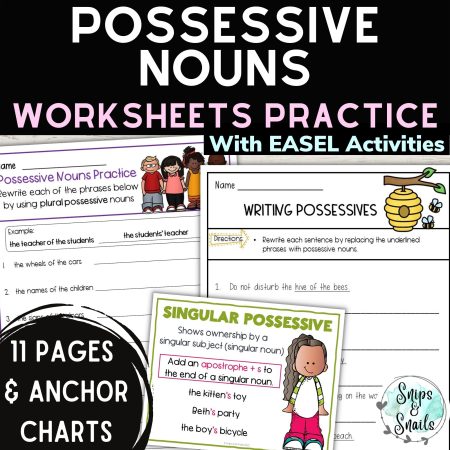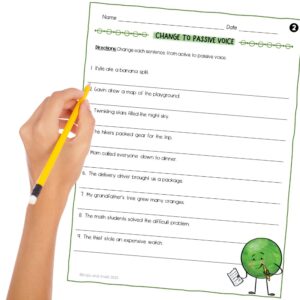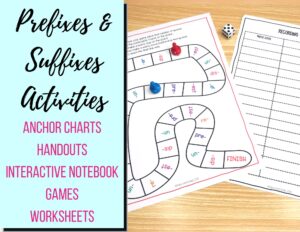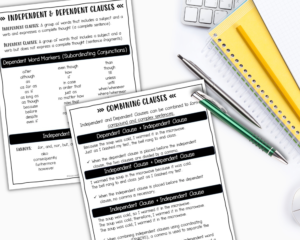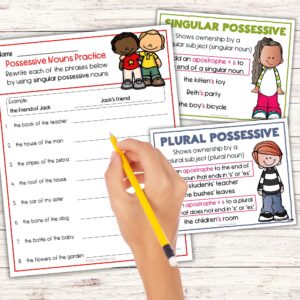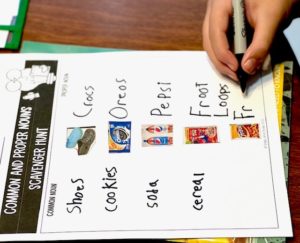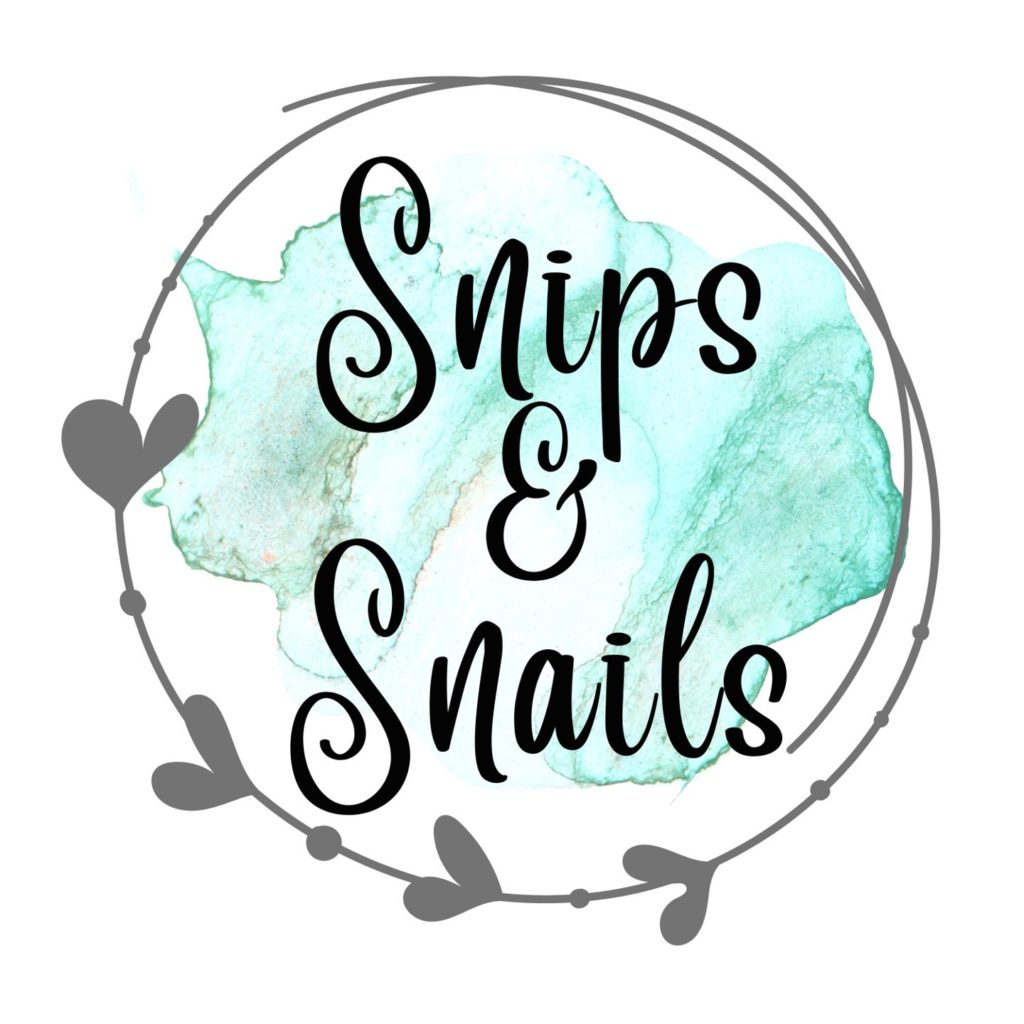Teaching Apostrophes in Possessive Nouns
Using apostrophes in possessive nouns is one of the most challenging punctuation skills young students need to learn. Once they’ve been introduced to this punctuation mark, they want to use them everywhere! Editing their writing can be a nightmare.
The most effective way to catch, correct, and prevent these errors is with strategic direct instruction and purposeful practice.
With these steps, you can easily help your students understand how to use apostrophes with possessives.
1. Possessive Nouns | Rules and Examples
Introduce the Topic
The obvious first step is to introduce the concept of what possessives are and how to use apostrophes in possessive nouns. By including videos and visuals as often as possible in your lessons, you can increased student engagement. The video below is a winner with my students as it gives an overview of the concept and provides plenty of examples they can relate to.
Possessives Anchor Charts
After the introduction, review the rules for punctuation with the students and provide more examples. Anchor charts are great for this.
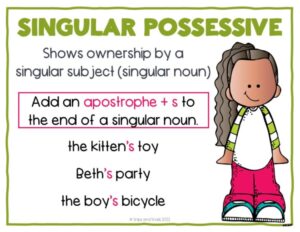
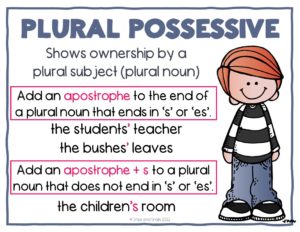
Students can easily access these posters during classroom activities. Until they master the concept, they should have access to reference materials that help them remain engaged and find success.
While the charts shown above are part of my possessive nouns resource on TpT, you can certainly create your own anchor chart with your students in class using chart paper.
2. Identify Singular and Plural Possessives
The next step in the lesson cycle is having students identify possessive phrases in isolation (sentences come later!).
I begin with words in isolation to reinforce the apostrophe rules and develop the students’ observation skills. By helping them focus on the noun (Is it singular or plural?), then checking the apostrophe (Where is it located in regards to the ‘s’?), students have an opportunity to practice analyzing the words more closely.
Sorting Activities for Apostrophes in Possessive Nouns
Word sorting activities are not only effective, but students love them!
The pages below are examples of what I use in class, but you can also write words on index cards for students to sort individually or with partners. Just create a deck for your lessons or for use in small groups or centers.
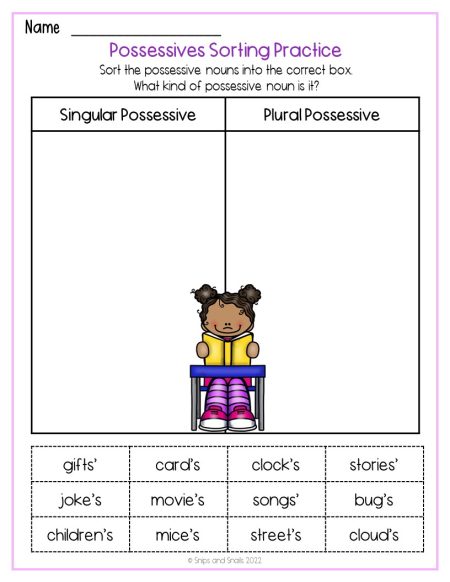
Intervention Tip for Where to Place the Apostrophe
Since the lesson is structured to build in complexity, this is a good time to catch kids who may already show signs of struggling.
One trick I use with students is to show them the image below and tell them to think of the apostrophe as an arrow ‘pointing to’ the owner(s). “Who does the object belong to?” The arrow tells us.

3. Writing and Recognizing Possessive Noun Phrases
It’s time to begin writing possessive nouns!
Once students have a grasp of differentiating singular and plural possessive nouns, they’re ready to begin working on writing exercises.
Changing Phrases
The next step in the lesson is to present students with short phrases that indicate ownership then have students rewrite the phrases to include possessive nouns. See the example below:

I structure this part of the lesson so that the students practice with singular possessives first then move to plurals before I mix the skills later in the lesson. This format makes it easier to intervene, if needed.
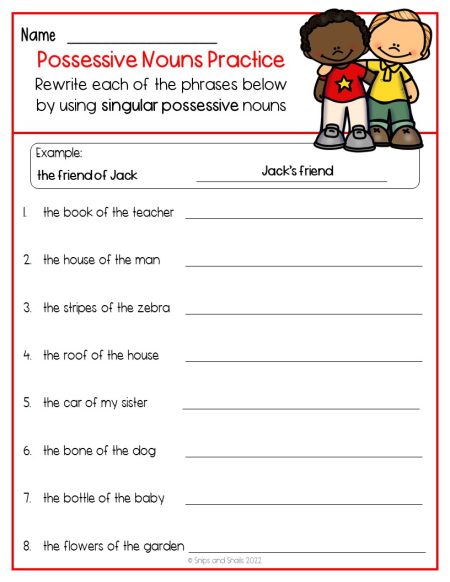
Helpful Questions for Self-Assessment
Teaching students to ask themselves questions when working through the phrases provides them with a highly effective tool to use when working independently.
Who is the owner?
What is the possession? or What do they own?
Does the phrase make sense?
For example, if a student read “the feathers of the bird” and writes “the feathers’ bird”, they can quickly catch their own error by asking the questions to self-assess. The third question, if they need to get that far, should stop them in their tracks.
Recognizing Singular and Possessive Noun Phrases
At this point, give students mixed phrases (singular and plural) and have them match the phrases to the correct possessive. It’s a simple and quick way to find and address any lingering misconceptions, though there are rarely any at this point.
An example of this activity is shown below. This sheet is part of possessive nouns resource, but you can develop your own phrases to use in your classroom.
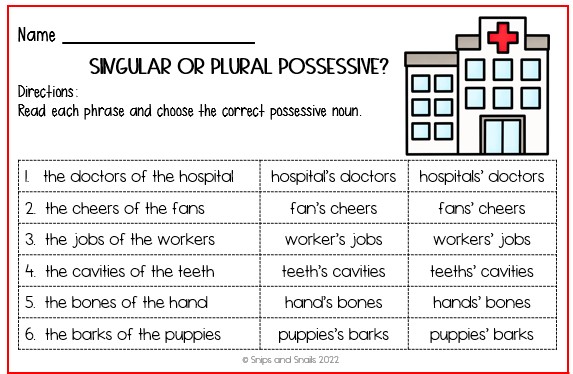
4. Writing Apostrophes in Possessive Nouns in Sentences
The final step in the lesson is to have students practice rewriting sentences using possessive nouns in place of phrases. While straightforward in its approach, this activity can present a challenge for some students.
This exercise requires students to synthesize the new information with grammar skills previously taught. They are not only needing to remember how to rewrite the phrases using apostrophes correctly, but they now have to also remember other capitalization rules.
Give students as much practice as you can with this and intervene immediately with anyone who needs it. Struggling students may need to go back to a previous step in the lesson.
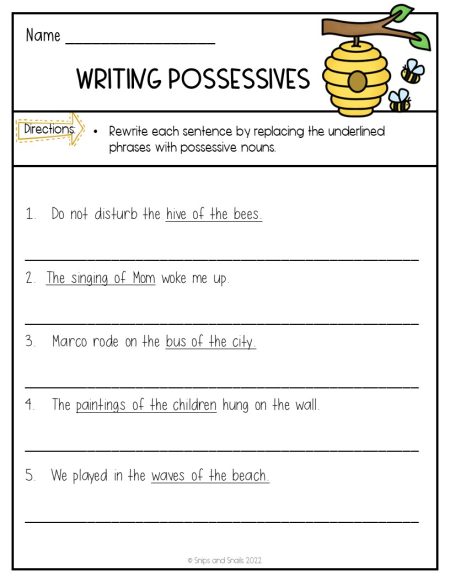
Gamify Your Practice
One of my students’ favorite extension activities is my roll-and-write for possessive nouns. It’s fun, meaningful, and can be challenging depending which words they choose.
Because it can be played multiple times with different results each time, the activity makes a great addition to centers.
You can download a freebie of the activity below.
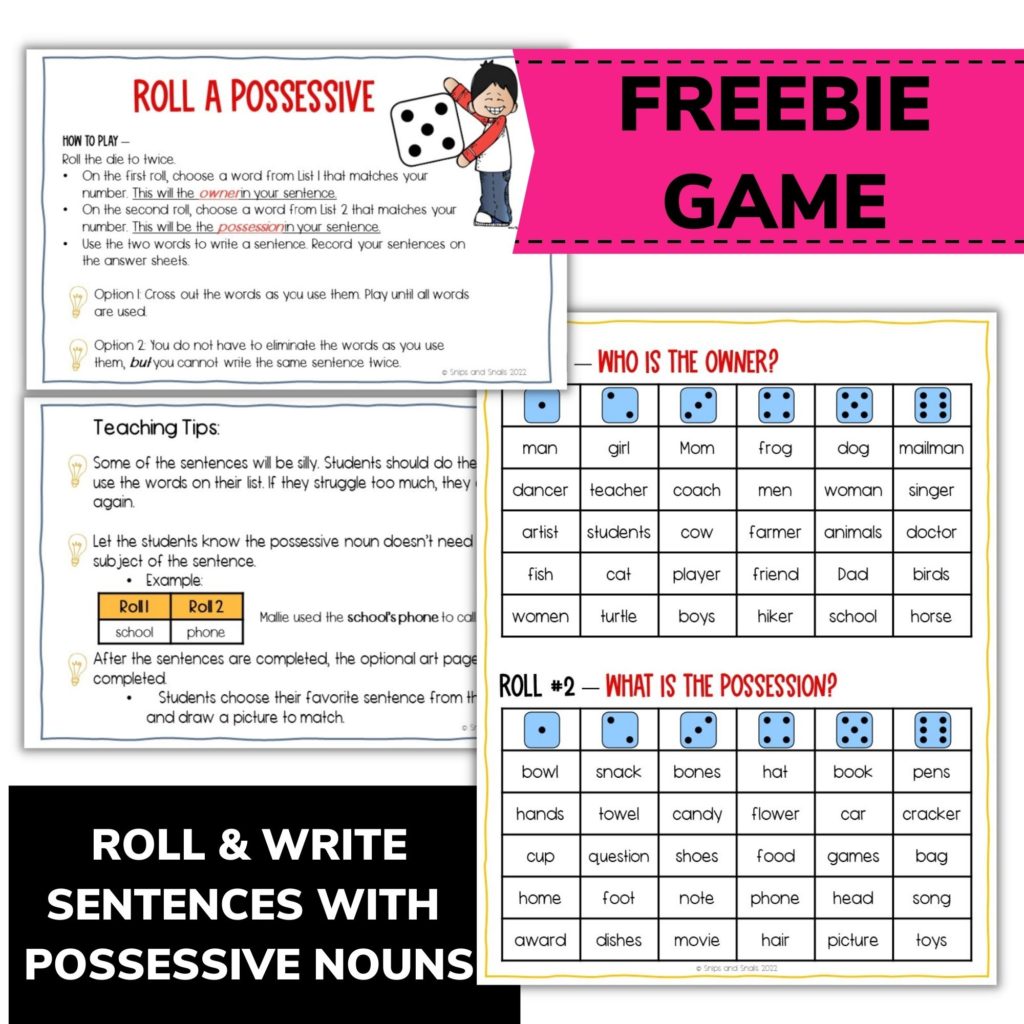
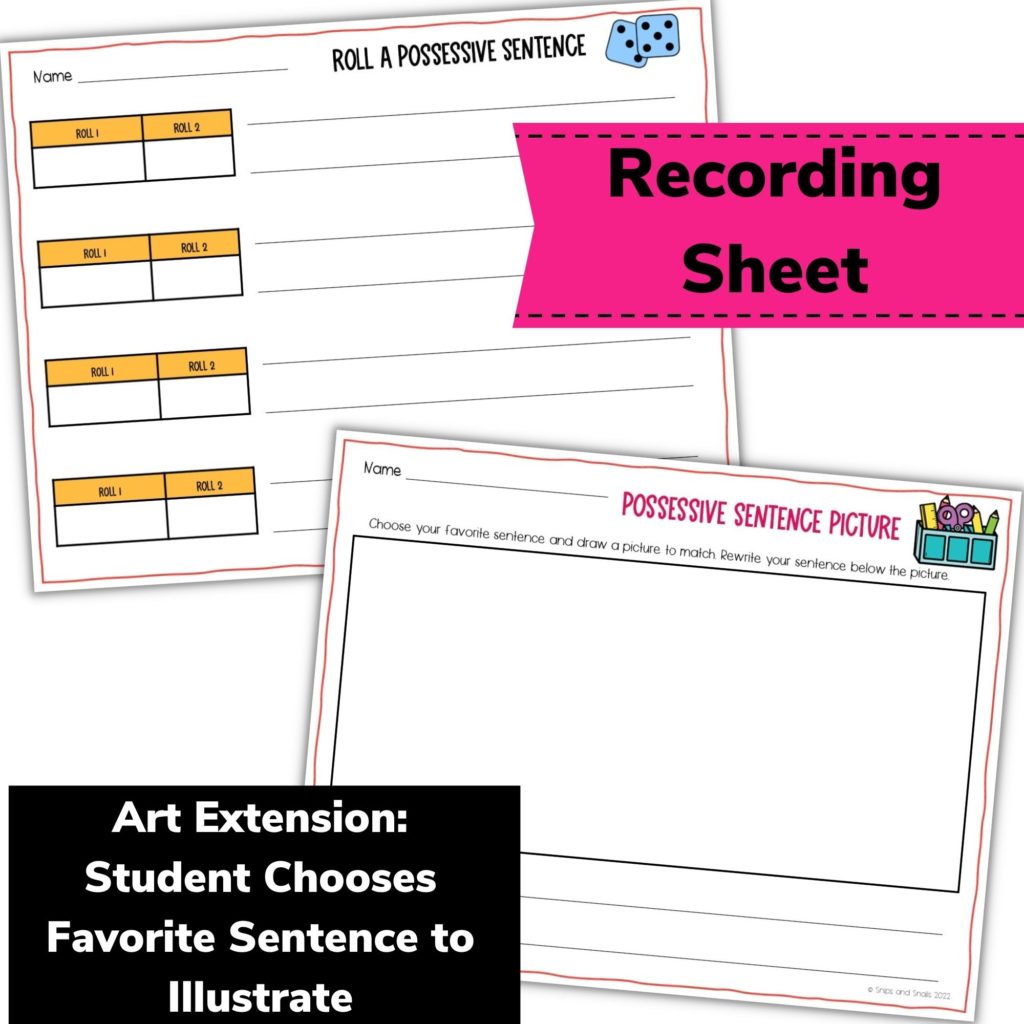
The Results
By incorporating the steps above, you can help your students master possessive nouns faster and easier than ever before. As a bonus, you’ll have less need for reteaching since you approached the lesson strategically.
Try the approach outline above and let me know how it works in your classroom.
And before you go, don’t forget to grab the free resource you can use with your students.
Save Time & Effort
You can save yourself time and the stress of creating the materials you need by grabbing the resource below.
It includes 11 worksheets (including digital versions) along with the anchor charts shown above.
It’s ready to print and use – and is very affordable!
Related Post: Three Easy Tips for Teaching Concrete Nouns
Related Post: How to Teach Common and Proper Nouns
Do you have any other tips for teaching this concept? Drop them in the comments below.

